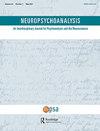表演和制定:为了清晰而做出的努力
Q3 Psychology
引用次数: 1
摘要
表演和制定是在口语和精神分析心理治疗中广泛使用的术语,用于描述患者和治疗师的行为。这两个术语在文献中定义不清,并且随着理论框架的变化而有不同的解释。人际关系和人际关系治疗方法的出现模糊了弗洛伊德建立的谈话和行动之间的区别,也模糊了临床实践的界限。回顾这两个术语的历史,就会发现它们的核心含义是越界的;由分析对中的一个或两个分别进行。违反治疗界限的行为和分析态度,包括那些由反移情引发的行为,是弗洛伊德最初认为的压抑创伤的重要指标。他对诱惑理论的回避导致了表演与移情的混淆,也导致了后来的作者将表演与反移情混淆。创伤性记忆是一种独特的存储方式,难以恢复,其特点是默认模式网络功能低下,中央执行和突出网络功能亢进,导致其行为表现为表演和制定,而非言语表达。因此,了解这些行为形式可以为“谈话治疗”做出重要贡献。本文章由计算机程序翻译,如有差异,请以英文原文为准。
Acting out and enactment: An effort at clarity
ABSTRACT Acting out and enactment are terms in widespread use colloquially and in psychoanalytic psychotherapy to describe patient and therapist behavior. Both terms are poorly defined in the literature and have varied in interpretation as theoretical frameworks have changed. The advent of relational and inter-personal therapeutic approaches has blurred both the distinction between talking and action established by Freud and the boundaries of clinical practice. A review of the history of both terms reveals their core meaning as transgressive; by one of the analytic pair or by both, respectively. Behavior violating therapeutic boundaries and the analytic attitude, including those triggered by countertransference, are important indicators of repressed trauma as Freud originally thought. His retreat from the seduction theory led to the confusion of acting out with transference and to later authors confusing enactment with countertransference. Traumatic memories are uniquely stored and difficult to recover and characterized by hypofunction in the default mode network and hyperfunction in the central executive and salience networks leading to their behavioral expression in acting out and enactment in contrast to verbal expression. Thus understood these forms of behavior can make an important contribution to the “talking cure.”
求助全文
通过发布文献求助,成功后即可免费获取论文全文。
去求助
来源期刊

Neuropsychoanalysis
Psychology-Neuropsychology and Physiological Psychology
CiteScore
2.50
自引率
0.00%
发文量
24
 求助内容:
求助内容: 应助结果提醒方式:
应助结果提醒方式:


